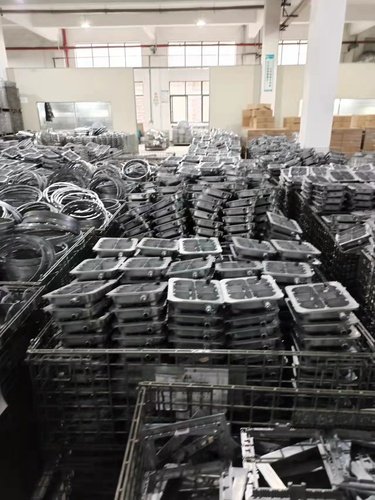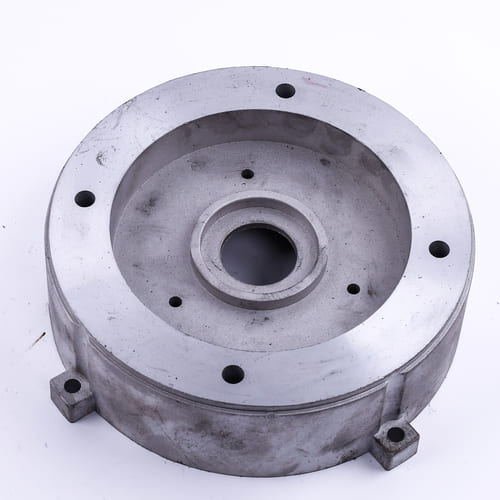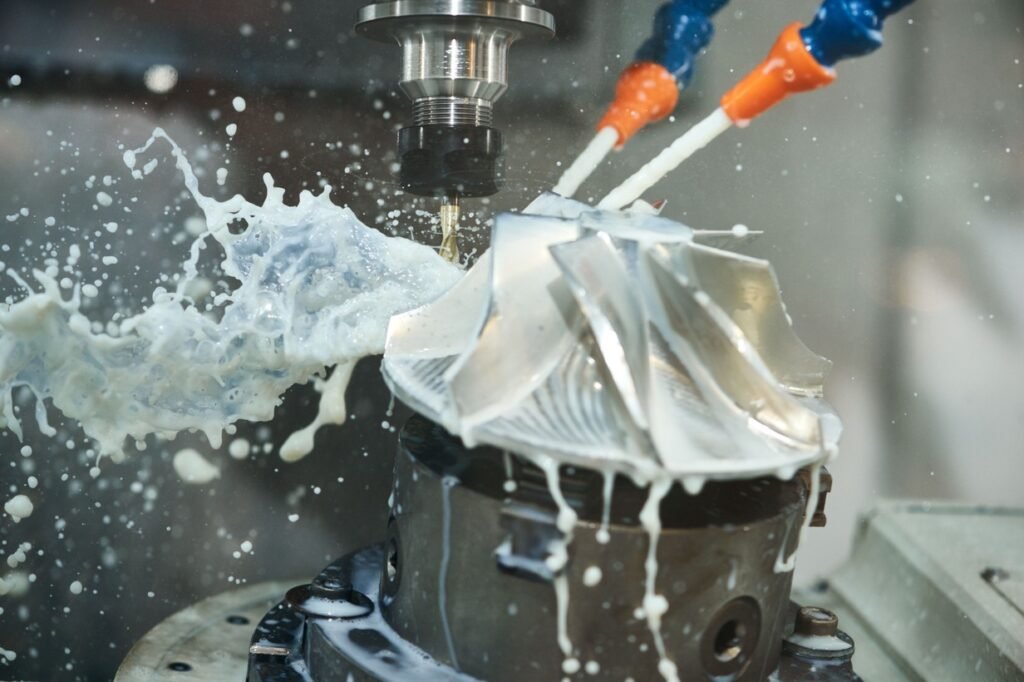The market demand for die-castings keeps growing. In 2021, the global die-cast market was valued at USD 61.12 billion. There is a projection that by 2027, this would increase to USD 86.3 billion.
So, you may be wondering: “What are the industries using cast parts in their operations?” Well, that’s exactly what we would show you here. Follow closely.
What is Die-casting?
Die-casting is an automated process of pressing molten alloy into a mold under high pressure and at high speed. It’s a method of heating alloys to a high temperature till they are molten. Here, liquid alloy is injected under high pressure into a mold.
The mold comprises two halves separated to reveal the cast aluminium parts after the molten aluminium has solidified. One of the two halves is static, while the other is mobile.

After injection of the molten metal into the mold, it solidifies. This results in cast parts with a precisely formed and smooth surface.
A single mold can be used multiple times. This makes die casting preferable for a bulk cast part. Also, there are two different types of die-casting machines. These are the hot chamber and cold chamber machines.
The casting process is seamless as it requires minimal assembly. You can also integrate all the assembly features, such as bosses, holes, students, etc., into the mold design at a go.
Industries that use Die-casting
• The Construction industry: This industry needs cast parts to create strong and precise components. The industry uses die-castings to construct buildings, bridges, shop fronts, window frames, superstructures, building frames, etc.
Die-cast parts are also used to manufacture plumbing fixtures such as thermal values, pipe fittings, etc. Because aluminium is lightweight, has strong performance under temperature, etc, aluminium cast parts are largely used in the construction industry.

• Automobile industry: The automotive industry uses lightweight castings, such as aluminium cast parts, to manufacture various vehicle parts. These vehicle parts include Engine bracket parts, seat belt parts, wiper parts, engine room parts, lighting parts, etc.
Die-cast parts are used to manufacture automotive components such as transmission housings, steering gear housings, clutch housings, carburettor housings, clutch housings, valve covers, etc.

Other such automotive components made with die-cast parts include wheel hubs, stepper motors, shade poles, heat sinks, stators, alternator housings, etc.
Furthermore, die-castings are used to manufacture some components of electric vehicles, such as heat sinks, gearboxes, intake tubes, car rims, engine cylinder heads, etc

Die-cast parts are also used to manufacture door lock housings, pulleys in the seat belts, retractor gears, and other automotive parts that require quality aesthetics requirement, or strict tolerance.
• Electronics industry: Die-casting enables the electronics industry to swiftly prototype electronic parts and create specialist equipment.

The electronics industry uses die-cast parts to manufacture various electronic devices and products. These include heat sinks, internal frames, electronic device casings, cylindrical heads, compressor spirals, cooling fans, etc.
Some other electronic parts made with die-casting include smartwatch components, headphone housings, couplings, camera chassis, etc.
• Furniture: Various furniture materials are made with die-cast parts. These include knobs, door locks, hinges, brackets, armrests, etc. Also, the furniture industry uses cast parts for connecting elements, metal fittings or handles.

Die-casting offers various advantages to the furniture industry. These include high precision, the ability to install multiple functions into the furniture parts, the absence of joints, etc. Because Die-cast parts have excellent finishing, they increase the aesthetics of furniture.
• Aerospace industry: This industry uses die-cast parts to create tiny and big aircraft components. The die-casting process creates parts and components that can withstand extreme temperature levels usually experienced in the aerospace and aviation industry.

The common aerospace casting alloys include A356 & A357 aluminium, Inconel 69 & 625, Stellite 6, Stellite 21 & Stellite 21 family of cobalt-bases alloys, 17-4 & 15-5 PH stainless steel, etc
The aerospace industry makes use of aluminium die-cast parts because they are lightweight and durable.
Various aerospace parts are made with die-cast parts. These include fuel system parts, electronic enclosure detention, engine piston heads, ring parts, seat components, airline handrails, engine housings, window frames, valves, mounts, engine rings, engine blades, etc.

Also, die-cast parts are used to manufacture hydraulic fluid systems, cabin systems, environmental controls, internal mechanical parts, etc. Castings used on aircraft engines are always smaller and simple.
• Health care industry: Die-cast parts are durable and have high strength. With cast parts, it is easy to manufacture complex geometries with tight tolerances. Die-cast parts require less machining when compared to other manufacturing methods.
The two commonest alloys used for medical equipment are aluminium and zinc alloys. Aluminium is lightweight, corrosion-resistant, and durable. It also has a high strength-to-weight ratio and EMI/RFU shielding properties.

With these features, among others, aluminium die-cast parts offer high performance and durability for surgical equipment such as stethoscopes, containers, tubes for diagnostic equipment, trays, etc.
The common aluminium alloy grades used to manufacture cast parts for medical equipment are the A360 and A389 aluminium alloys.
Zinc die-cast parts are suitable for medical equipment requiring complex precision and high dimensional stability. These parts are used to manufacture stethoscopes, crutches, wheelchairs, seat lifts, etc.

Die-cast parts are used to manufacture medical equipment such as ultrasound systems, dialysis equipment, surgical lamp base, monitoring device, hospital beds gearboxes, dialysis equipment, etc.
Various surgical equipment are made with die-cast parts. These equipment include forceps, retractors, scissors, drills, surgical equipment, files, clamps, etc. Cast parts are also used to manufacture infusion stands, infusion pumps, blood pressure monitors, etc

• Culinary industry: Die-cast parts are used to manufacture cookware lids, oven interiors and exteriors, blenders, cooking pots, gas stoves, electrical cookers, frames, etc.
Aluminium die-cast parts are largely used in manufacturing cookware. This is because these castings are an excellent conductor of heat.
However, note that using aluminium cast parts in cookware and utensils can be damaging. If your cooking ingredients include grapefruits, tomatoes, pineapples and other acidic items, there is a risk of having aluminium leaches into the food. This leach alters the flavour and appearance of the food.

•Telecommunications industry: Die-cast parts are used in manufacturing telecommunications equipment such as base plates, heat sinks, etc.
Die castings are used to create thin-walled and intricate components, such as the finer optical transceivers.
Also, Die-cast parts are used to produce various networking equipment. These include high-precision die-cast zinc pins in switching systems, aluminium cast RF filter boxes in base stations, shielding boxes for microwaves, heat sinks, connector housings, etc

Aluminium alloys and copper alloys are usually used in manufacturing communications cables. Aluminium cast parts are used in Satellite communications. They are used for the shutters on the windows of the International Space Station. This protects the windows from impacts
• Industrial sector: Die-cast parts are used to manufacture several industrial parts such as the rotors and stators, impeller, shaft sleeves, valves, etc
• Electrical industry: Die-cast parts are used to manufacture RF filler repeaters, tower housings, electrical meters, LED modules, etc.

• Lighting: Die-cast parts are used to manufacture the LES heat sink systems, LED street light housing, etc.
• Home appliances: Die-cast parts are used to manufacture domestic appliances such as vraje wheel pulleys, vacuum cleaner bodies, washing machine rotors, exterior door levels, roller latches, etc.
Conclusion
Die-casting has versatile uses. You can use the die-cast parts in the automobile, electronics, aeronautics, energy, industrial, telecommunications industries, among others.
We have taken you through these various industries. This would help you better appreciate the impacts of the die-casting industry on the global world.








